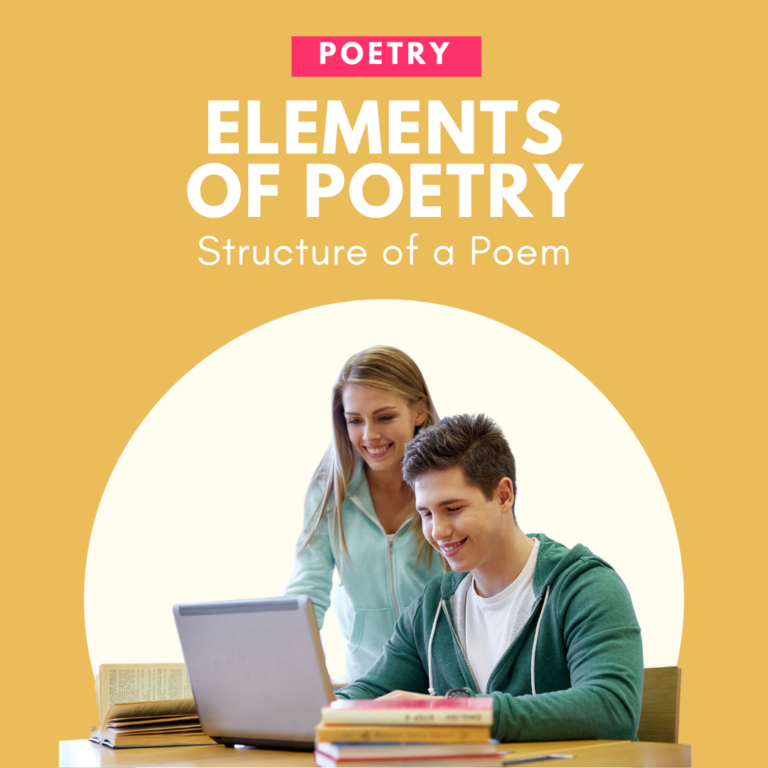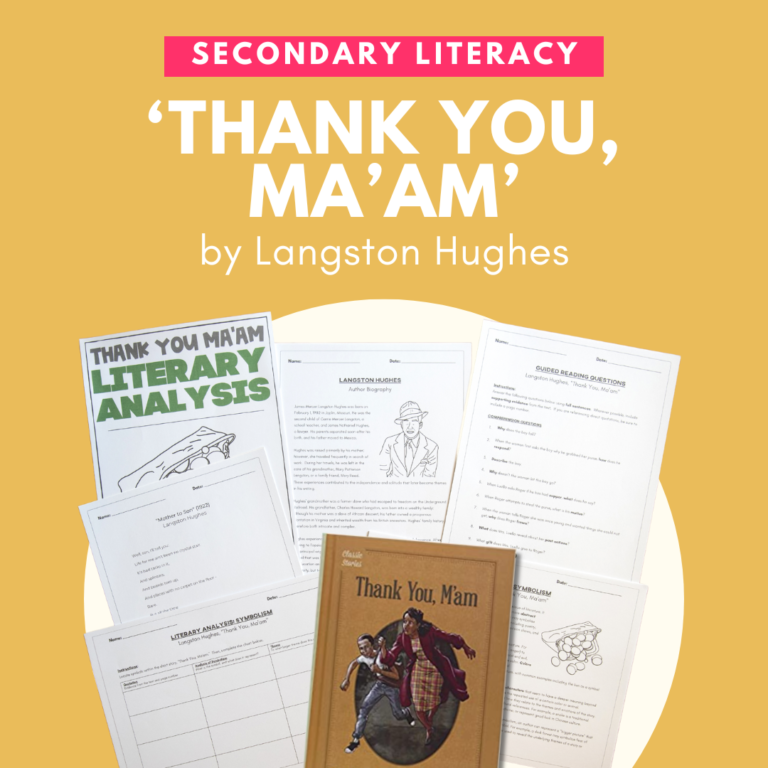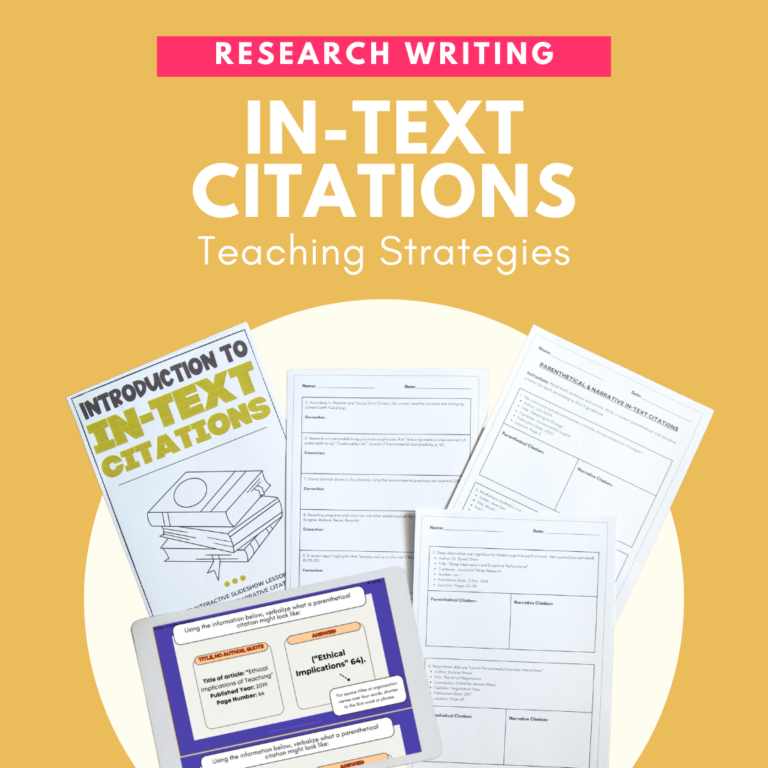There are so many reasons to bring poetry writing into the classroom. Whether you teach reluctant writers, language learners, or experienced authors – poetry has a lot to offer to everyone. In this blog post, you’ll learn some of the benefits of writing poetry with your students. I’ll also share some of my favorite writing workshops for teaching students how to write poetry. Read on for more ideas to teach poetry writing.
What are the benefits of teaching students how to write poetry?
Writing free verse poetry is a great way to spark creativity in your classroom. Students typically follow many structures and rules while writing. In contrast, there are far fewer rules to how to write poetry. Free verse is the perfect opportunity for them to have some fun with language!
Poetry can also be highly beneficial to struggling writers because it allows them to use language in a new way. Shorter forms of writing can be more accessible to some students. This is especially true when these shorter forms follow a poetry template. Writing short-form poetry can help boost confidence in reluctant writers.
Last but not least, writing poetry is an enriching activity for English Language Learners. The meter of poetry helps language learners to become familiarized with the rhythm and sound of the English language. Reciting poetry out loud can also help with fluency.
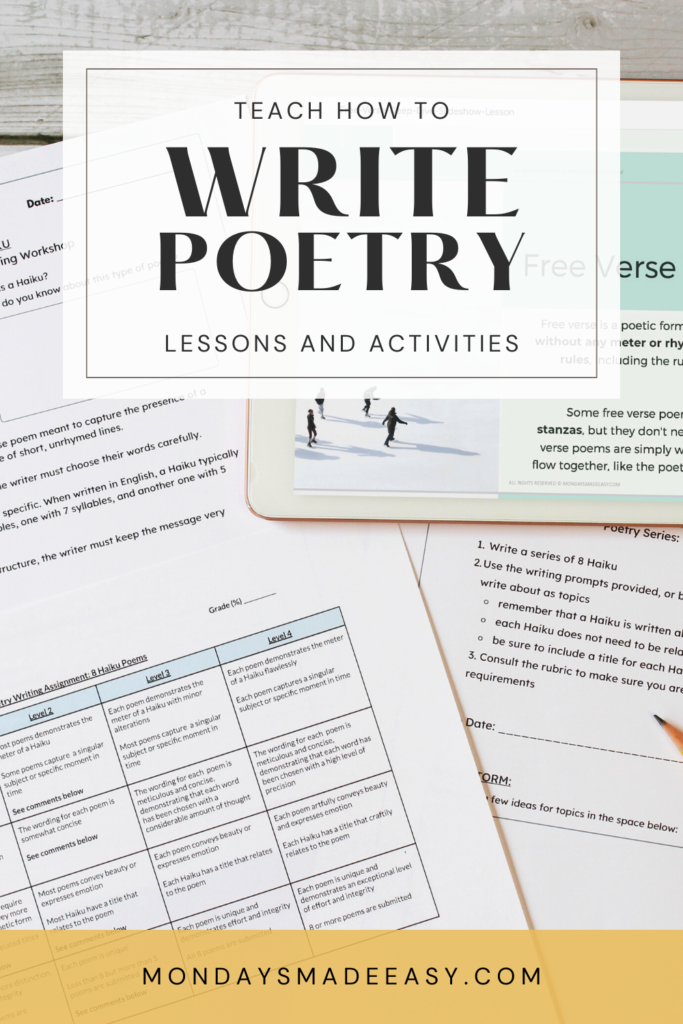
What are the rules to writing poetry?
One of the reasons why teaching poetry is beneficial is that many standard rules of writing don’t apply. Depending on the student, these could be the ideal conditions under which to write. Students who prefer the lack of structure might enjoy exploring free verse poetry. To offer some guidance, you could share a few sets of rules to writing poetry from famous authors like George Orwell or Roxane Gay. These rules are offered in order to inspire writers instead of limiting them.
On the other hand, some students thrive with more structure. For them, learning how to write poetry using specific forms like sonnets or haiku can be helpful. Poems like sonnets or haiku include templates for meter and rhyme schemes. They offer more rules to writing poetry than free verse but still allow creativity and expression.
Using Rubrics for Writing Poetry
Rubrics will help your students with guidance. Instead of rules, they provide your students with criteria to measure their success. A writing poetry rubric can assess the expression of a complete idea or the use of language in a playful and creative way. You can also encourage students to use figurative language, poetic devices, or other elements of poetry.
For more specific success criteria, you can draw on poetry writing skills taught in lessons from your class. For example, if you teach students Shakespearean sonnets, your writing poetry rubric can assess writing a proper couplet.

Poetry Writing Workshops for Middle School and High School
Here are a few of my favorite writing workshops for teaching students how to write poetry. These lessons are all suitable for upper middle school or junior high school. If you teach English Language Learners or struggling writers, your students will also enjoy these writing workshops.
Teaching How to Write Haiku Poetry
Haiku poetry is a great form to use to teach how to write poetry. Since haiku follow a specific meter and scheme, it is great for teaching the rhythm and sound of the English language. Haiku can also be an engaging challenge for students to deliver a profound message in such a concise way. Haiku is the perfect choice for English Language Learners and advanced English students alike.
You can introduce haiku to your students using this haiku writing workshop. This slideshow lesson will teach students about the history of haiku. It will also explore the unique characteristics of this poem using several haiku examples. Finally, you can guide students through writing their own haiku poetry using the templates, informational handouts, and poetry writing rubric provided.
Teaching How to Write Sonnet Poetry
Because of their complexity, sonnets are an enriching lesson for more advanced students. If your students are studying Shakespeare, the Renaissance, or the Elizabethan era, then exploring sonnets will also be of cultural and historical relevance to learning how to write poetry.
Much like haiku, sonnets are structured using a specific meter and scheme. To add a layer of complexity, this scheme has a rhyming pattern too. Sonnets are a beneficial form of poetry to teach because of the beautiful way it highlights the rhythm and structure of the English language.
You can introduce sonnets to your students using this sonnet writing workshop. This slideshow lesson will teach students the structure of a sonnet. It will also explore the unique history of this style by relating it to the work of William Shakespeare and Francesco Petrarca. Finally, you can guide students through how to write their own sonnet poetry using the informational handouts and poetry writing rubric provided.
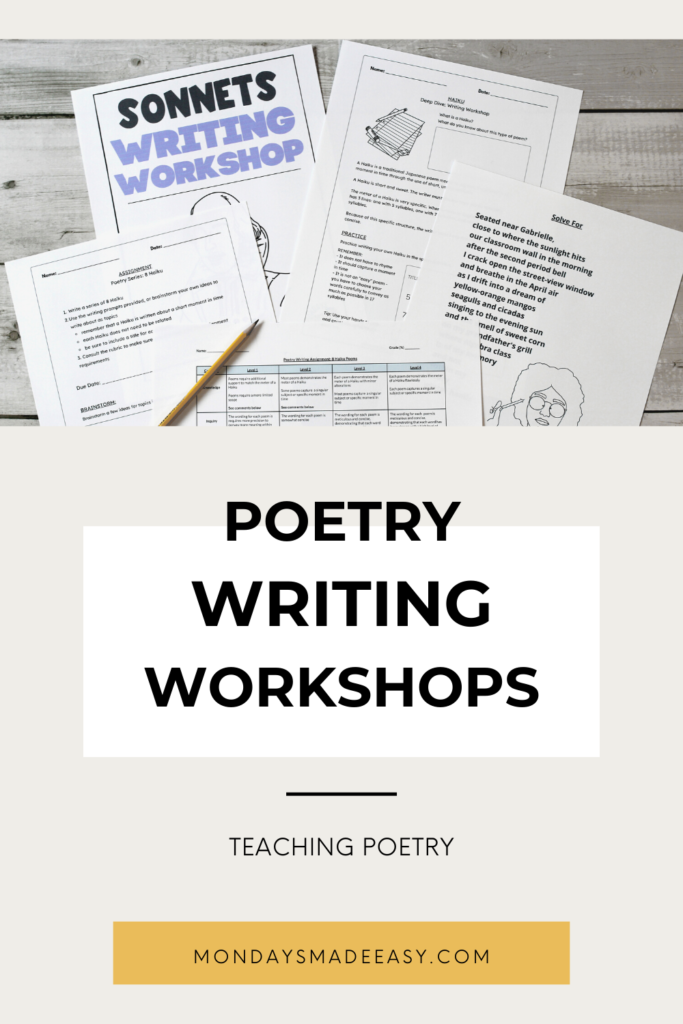
Teaching How to Write Free Verse Poetry
You can experiment with bending the rules by teaching your students about free verse poetry. Free verse poetry can be daunting because there are practically no limits; however, free verse poetry has also become highly relevant in popular culture. This is partly due to the new wave of Instagram poets that have become well-known in the last few years.
Take Rupi Kaur for example. You might know Kaur from her popular publications Milk and Honey, The Sun and Her Flowers, and Home Body. If you haven’t heard of her name, you could probably recognize one of her many illustrative free verse poems that have gone viral on social media. Her visual and linguistic aesthetic has become wildly popular on platforms like Instagram that combine these two mediums.
Another example is Kate Baer, who has popularized the concept of erasure poetry, also known as “blackout poetry.” Kate Baer began posting her poetry on Instagram. As a mother of four, Baer took on the role of raising her children full-time and shared her experience through her work. She received criticism for her appearance online – primarily from paternalistic audiences on the internet. She turned their criticism into art by literally copying their comments and omitting words to convey her own message.
Given the endless possibilities, free verse poetry is an exciting form to teach how to write poetry. Students can choose to imitate the styles of Kaur and other Instagram poets using illustrative free verse. This is the perfect option for the creatives in your classroom. Blackout poems are another great fit for English Language Learners or students who enjoy word puzzles.
This free verse writing workshop includes lessons on the different types of free verse poetry. It showcases examples from Kaur, Baer, and other poets in this new wave of poetry. It also includes pages for blackout poems and a poetry writing rubric for assessment.
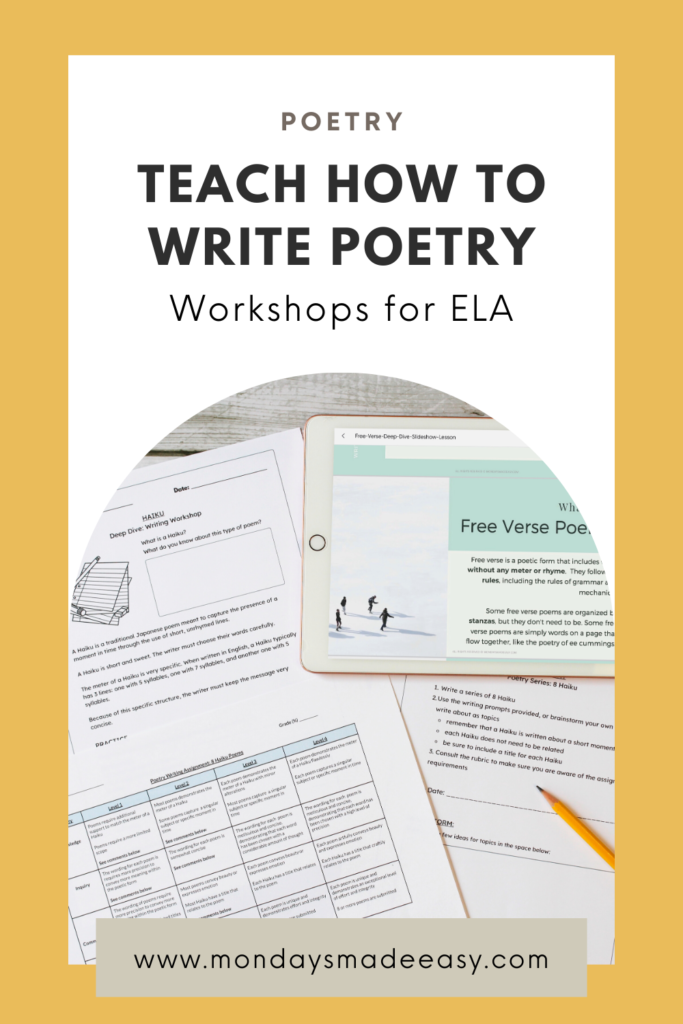
Teaching Students How to Write Poetry
There are so many benefits to teaching students how to write poetry. Poetry writing can appeal to all levels of learners. The structure and rhythm of poetry can also offer guidance for struggling writers and English Language Learners. Of course, poetry is also a wonderful opportunity to encourage expression. I hope you get the chance to try one of these poetry writing workshops with your students!

